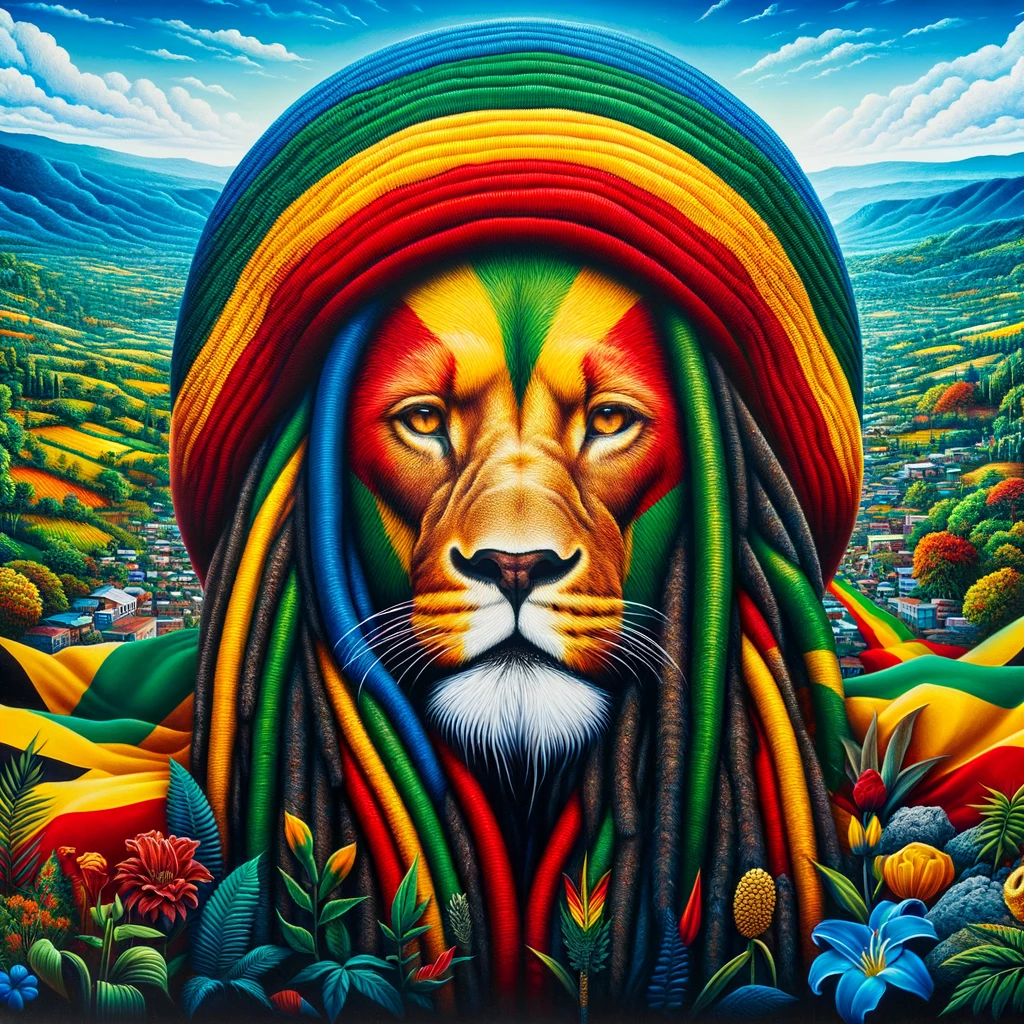Rastafari: Roots and Rebellion
Inna di early 1930s, Jamaica birthed Rastafari, a movement deeply rooted inna African identity and resistance against colonial oppression. Di teachings of Marcus Garvey, a Jamaican national hero, ignited di flame, preaching African pride and self-reliance. Garvey prophesied di crowning of a Black King in Africa who would signal di redemption of di black people. When Ras Tafari, later known as Emperor Haile Selassie I of Ethiopia, was crowned in 1930, many saw it as di fulfillment of Garvey’s prophecy, sparking di Rastafari movement.
Early Struggles and Societal Rejection
Rastas faced harsh discrimination in early Jamaican society. Dem were often seen as outcasts, rebels, and threats to di social order. Di movement’s early days were marked by persecution, with followers frequently harassed by police and marginalized by mainstream society. Their distinctive dreadlocks, symbolic of their Lion of Judah identity and biblical Nazarite vow, made dem easy targets for discrimination.
The Turning Tides of Acceptance
By di 1960s and 1970s, di Rastafari movement began to gain international attention, thanks in large part to di global success of reggae music and its most famous ambassador, Bob Marley. Marley’s music spread Rastafari messages of peace, unity, and resistance against oppression worldwide, challenging stereotypes and fostering a new respect for di movement.
Rastafari and Jamaican Culture: An Intertwined Identity
Today, Rastafari is recognized as an integral part of Jamaican cultural identity. Its influence is seen in music, language, and lifestyle, contributing significantly to di island’s global image. While challenges remain, Rastas have made substantial strides in gaining societal acceptance and religious freedom. Notably, legal reforms have recognized Rastafari sacramental rights, such as di use of cannabis, which is central to their spiritual practice.
The Impact Beyond Jamaica
Rastafari’s appeal extends far beyond di shores of Jamaica, resonating with people worldwide who connect with its messages of unity, resistance, and spiritual awakening. It’s a testament to di movement’s universal themes and di power of cultural expression to bridge divides.
Conclusion: A Journey of Faith and Acceptance
The journey of Rastafari from marginalization to acceptance in Jamaica is a powerful narrative of resilience, faith, and transformation. It reflects di broader struggles and triumphs of a people in asserting their identity, rights, and spiritual beliefs. As Jamaica continues to evolve, di Rastafari movement remains a vibrant and vital force in shaping di nation’s cultural and spiritual landscape.

